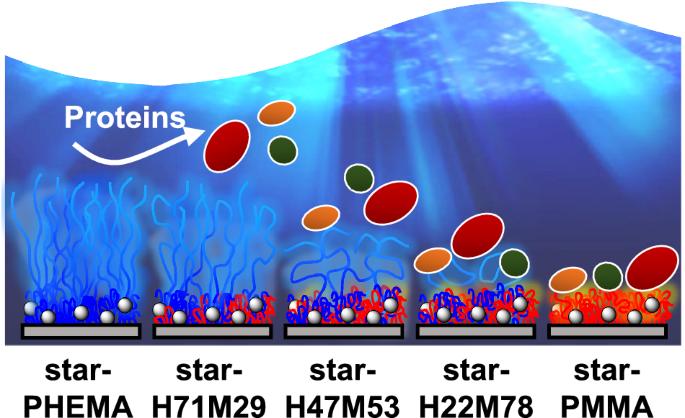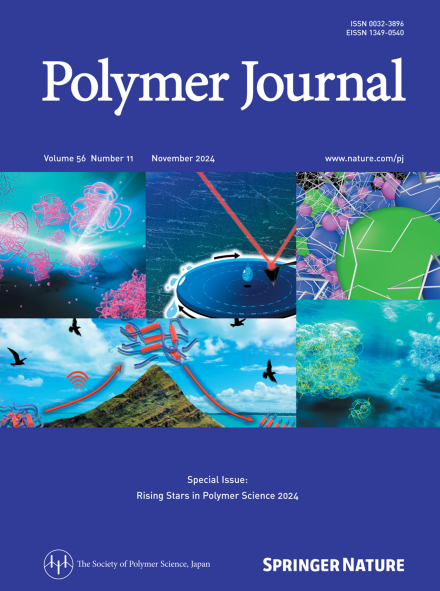具有可控亲水/疏水臂比的杂臂星形聚合物涂层表面的 zeta 电位和蛋白质吸附性
IF 2.3
4区 化学
Q3 POLYMER SCIENCE
引用次数: 0
摘要
涂有星形聚合物的表面被认为能形成高度致密的聚合物刷状结构,从而抑制生物沾污。本研究利用星形聚合物涂层的抗蛋白质吸附性和表面 zeta 电位(ζ)对其表面特性进行了评估,以阐明抑制细胞粘附的机制。高密度聚(2-羟乙基甲基丙烯酸酯)(PHEMA)的星形聚合物涂层表面在水中形成了电中性的弥散刷状结构,并表现出很强的抗蛋白质吸附性。考虑到研究中获得的数据,通过控制涂层材料的分子结构,可将表面ζ电位与抗生物污染性能联系起来。本文章由计算机程序翻译,如有差异,请以英文原文为准。


Surface zeta potential and protein adsorption on the coating surface of a heteroarm star polymer with a controlled hydrophilic/hydrophobic arm ratio
A surface coated with a star polymer is believed to form a highly dense polymer brush-like architecture and inhibit biofouling. In this study, the surface properties of the star polymer coating were evaluated with their resistance to protein adsorption and surface zeta (ζ)-potential to clarify the mechanism for inhibition of cell adhesion. The surface of the star polymer coating with a high density of poly(2-hydroxyethyl methacrylate) (PHEMA) formed an electrically neutral diffuse brush structure in water and showed high resistance to protein adsorption. Considering the data obtained in the study, the surface ζ-potential and antibiofouling properties were correlated by controlling the molecular architecture of the coating material. The surface properties of the star polymer coating were evaluated with their resistance to protein adsorption and surface zeta (ζ)-potential to clarify the mechanism for inhibition of cell adhesion. The surface of the star polymer coating with a high density of poly(2-hydroxyethyl methacrylate) formed an electrically neutral diffuse brush structure in water and showed high resistance to protein adsorption. Considering the data obtained in the study, the surface ζ-potential and antibiofouling properties were correlated by controlling the molecular architecture of the coating material.
求助全文
通过发布文献求助,成功后即可免费获取论文全文。
去求助
来源期刊

Polymer Journal
化学-高分子科学
CiteScore
5.60
自引率
7.10%
发文量
131
审稿时长
2.5 months
期刊介绍:
Polymer Journal promotes research from all aspects of polymer science from anywhere in the world and aims to provide an integrated platform for scientific communication that assists the advancement of polymer science and related fields. The journal publishes Original Articles, Notes, Short Communications and Reviews.
Subject areas and topics of particular interest within the journal''s scope include, but are not limited to, those listed below:
Polymer synthesis and reactions
Polymer structures
Physical properties of polymers
Polymer surface and interfaces
Functional polymers
Supramolecular polymers
Self-assembled materials
Biopolymers and bio-related polymer materials
Polymer engineering.
 求助内容:
求助内容: 应助结果提醒方式:
应助结果提醒方式:


